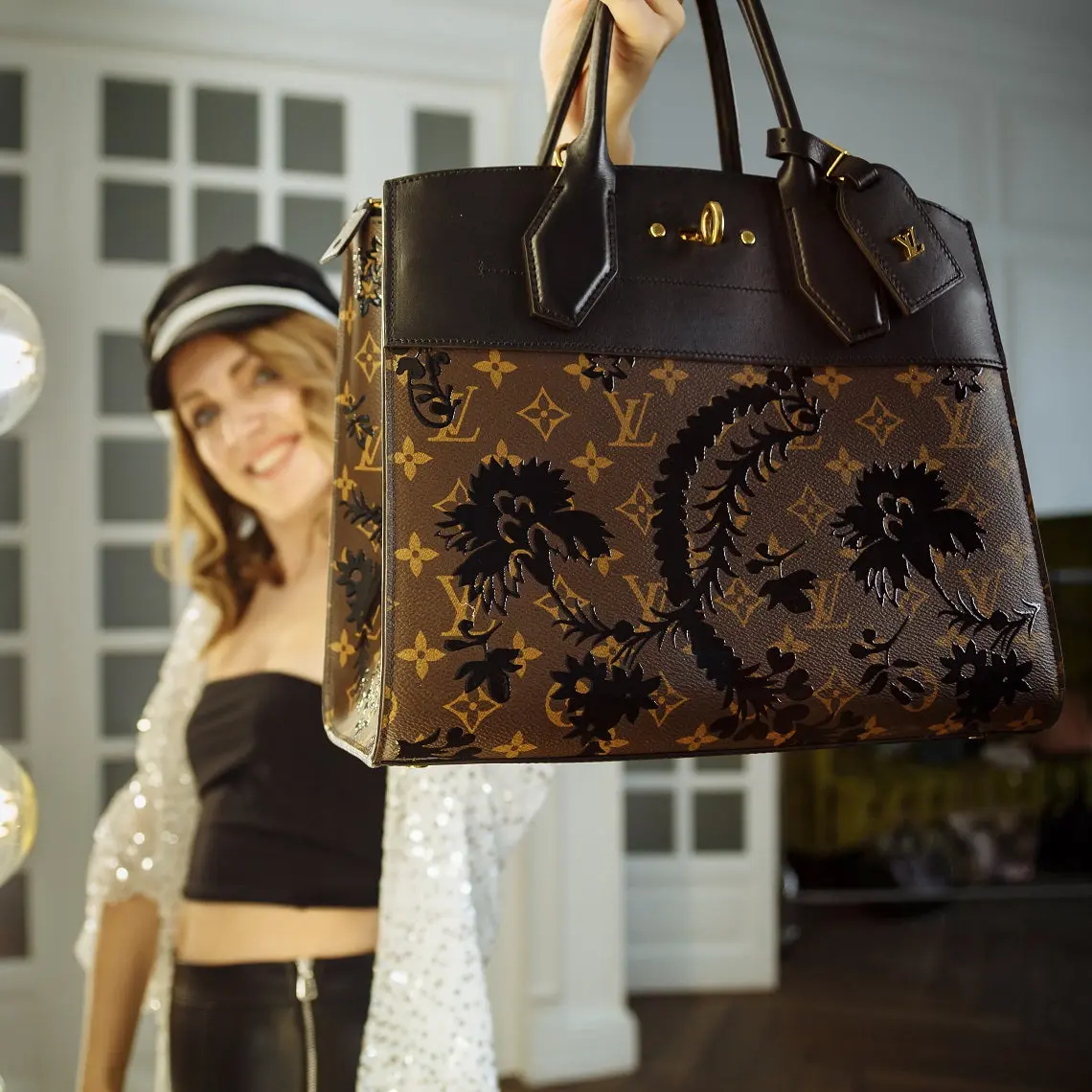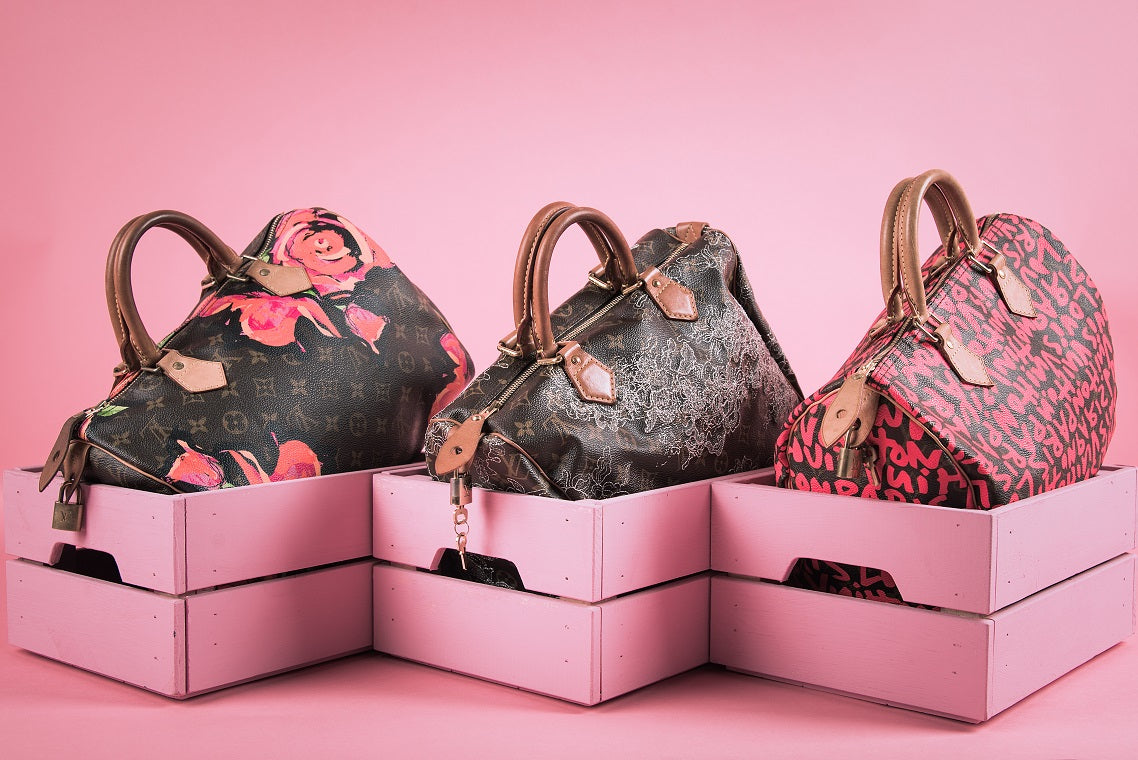
Here's the history of our favorite brand - in just 5 minutes!
🔹Louis Vuitton worked for a famous box maker in Paris. At that time box-making was a prestigious occupation.
🔹It was 1854 when Louis Vuitton established his luggage business in Paris at 4 Rue Neuve des Capucines. As rail and then automobile travel became an established part of life, Vuitton’s business began to grow. Carried by the likes of Paul Poiret, Dora Maar, and Francis Picabia, Louis Vuitton's luggage was not only a status symbol but also a practical purchase. Its trunks were—and still, are—waterproof to prevent accidental damage to the items inside.
🔹Contrary to a popular belief, Damier Ebene was the first Louis Vuitton pattern.
🔹The interlocking L and V with the floral pattern was designed by Louis Vuitton’s son, Georges Vuitton, in 1896 as a way to brand his nascent box and luggage business, and in the 120 years since, it’s become one of the most recognizable brands in the world. Within the fashion arena, the LV monogram pattern is having something of a resurgence.
🔹In the jet-set era of the 1950s and 1960s, Louis Vuitton trunks were the target for chic actresses on the go. Anna Magnani took a whole fleet on a trip to Paris in 1960, while single pieces often populated the travel pages of Vogue.
⠀
🔹As daywear became a growing category for women in the 1960s and 1970s, so did handbags for Louis Vuitton. From the Speedy style now popular again to the bucket, seen here on a 1972 episode of Bewitched, a Louis Vuitton purse became a coveted item among modern women.
⠀
🔹Dapper Dan made a killing with his knockoff business in the 1990s in Harlem. His downstairs store on East 125th Street was often visited by Run-D.M.C., LL Cool J, and Public Enemy, who all wore his wares on-stage, introducing the LV monogram to a new demographic of shoppers.
⠀
🔸In 1997, Marc Jacobs—at that time an on-the-rise New York designer who had been fired from Perry Ellis several years earlier—was named creative director at Louis Vuitton. Jacobs’s appointment gave new life to the monogram, making the house’s staid hatboxes and new Monogram Vernis collection popular among Jacobs’ model friends like Naomi Campbell and Kate Moss.
⠀
🔸In 2003, Jacobs introduced another monogram collaboration with Japanese artist Takashi Murakami. Murakami reworked the original monogram in white/black with multicolored logos and characters and in pink with cherry blossom designs for his first series. In 2004 and 2005 he added an actual cherry print and denim. It was immortalized as the must-have bag for teens and 20-somethings when it appeared on the arm of the poisonously popular Regina George in Tina Fey’s hit Mean Girls in 2004.
⠀
🔸Jacobs loved to push boundaries, and after much convincing, he convinced the company to allow Stephen Sprouse to create a graffiti version of Vuitton’s monogram. “Louis Vuitton” and “LV” were painted over the house’s traditional brown-on-brown print—the first time its monogram had ever been updated—and the bags became pop-culture sensations. For Jacobs’s final collection for the fashion house, he resurrected the Sprouse design as body paint on model Edie Campbell.
⠀
🔸Throughout the rest of Jacobs’ tenure at Louis Vuitton, he continued to rework and update the house’s monogram bags. Spring 2007 saw an all-denim, Frankenstein-ed bag made from stitching together other pre-existing LV styles; Spring 2010, ombré-dyed messenger bags; and Fall 2010, sequin embellishments.
🔸As the monogram grew in popularity, so did the range of monogrammed products. On the runway, Jacobs used it for hats, tights, umbrellas, fans, and fur muffs, select versions of which were available at retail.
🔹Artist Richard Prince collaborated with the brand for Spring 2008, creating jewel-toned bags painted with his irreverent artworks. That season’s show was opened by a series of supermodels dressed as nurses from his “Nurse Paintings” series.
⠀
🔹The monogram has also inspired its fair share of artists, including Sylvie Fleury, who crafted a bronze sculpture of the signature LV duffel in 2001. Murakami has also incorporated the monogram into his Pop works following his collaboration with the brand.
🔹Nicolas Ghesquière’s first Louis Vuitton collection revitalized Paris Fashion Week with its wearable silhouettes and vaguely 1970s spirit. Key to the collection’s impact was Vuitton’s new Petite Malle bag, styled after its iconic trunks. Outside the Spring 2015 shows, it was the bag of choice from New York to Paris.
🔹Ghesquière’s other experiments with the monogram have ranged from twisting it into an undulating pattern on handbags (Fall 2014) to carving boot heels in the design’s four-petaled flower shape (Spring 2015). For Resort 2016, it appeared on ready-to-wear, when leather dresses were perforated with the floral pattern.
🔹For the 160th anniversary of Louis Vuitton’s founding, the house invited six designers and artists to design bags in its classic monogram colors.
🔹With Jonathan Anderson at Loewe and Jeremy Scott at Moschino, Ghesquière has helped make branded wears the look of the moment.
🔹At Vuitton's Fall 2017 menswear show, Kim Jones debuted a collaboration with Supreme that saw the hypebeasts go crazy. The reworked monogram featured the interlocked LV letters alongside Supreme's italic logo.
Did any of these facts surprise you?
⠀






